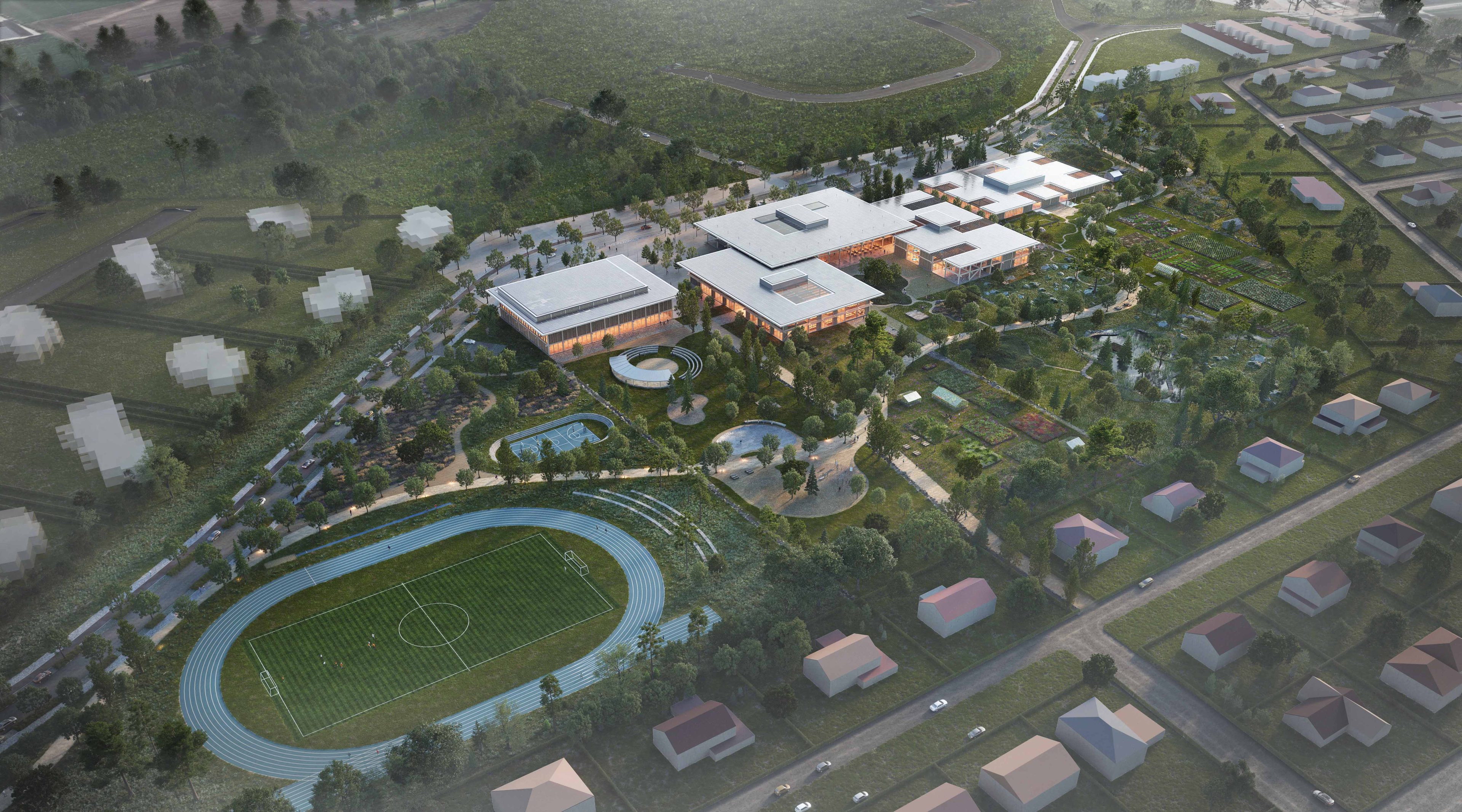A New Education and Community Centre for Tartu

|
“A Community under Many Roofs” is an open competition proposal for a new education and community centre for the Raadi neighbourhood in Tartu Municipality. It was developed by the Lundén Architecture Company in collaboration with Arhitekt11, a Tallinn-based architecture office. The new centre will provide a focal point and a communal hub for the growing neighbourhood at the edge of Tartu, the educational capital of Estonia. As Tartu expands beyond the old city centre, the Raadi area will become a major node in the city. The area will develop as a cultural and recreational centre with a strong educational focus. |
Location: Tartu Municipality, Estonia Program: Education and Community Centre for Raadi Size: 25 000 m2 Status: 1st prize in open competition Collaborators: Sander Aas (A11) Team: Rubén Tomás Verde, Carmen Lee, Eero Lundén, Nitika Srivastava, Minna Ahtiainen, Ida Gündogdu, Feng Ye |
 Bringing together a strong expertise in designing learning spaces and building with wood
Bringing together a strong expertise in designing learning spaces and building with wood
The winning proposal builds on a strong expertise in the design of educational spaces in Finland, and draws on the long-term development work of building sustainably with wood. The concept is based on a design for a low wooden building in which the large volume required by the programme is broken down into logically organised interconnected parts. With a sequence of yards dedicated for different age groups and different uses, the building has a strong relationship with the immediate surroundings and the existing farmlands.
The simple, grid-based structure gives a regular rhythm to both the interior and facades of the two-story buildings. It offers endless possibilities for creating spaces of different functions and characters within the framework. It also makes it easy to expand in the future as needed. The landscape is framed by a clear division that follows the structure of the building. Over time, both the buildings and the surrounding landscape can develop together, both as integral parts of the framework of the complex.
A place for the entire community
The new complex will provide Raadi with an educational centre serving students from daycare and lower school to middle and upper school grades, all the way to high school. In addition to the school, the complex also contains a library, and shared school spaces, such as canteen and workshops for the community to use after school hours. There is also a sports centre as well as a field for sports practice and large-scale sports events.
The spaces of the school are designed to accommodate various uses, promoting a lively centre for the community which is active throughout the day. There is a music cluster that turns into a centre for music education during after school hours, a media lab, a science hub, and an auditorium which can open to the canteen. The complex is designed to be built in stages and in total, the programme comprises of over 24 000 square metres. Together with the Estonian National Museum, the new centre will form a strong cultural node in the city, making the Raadi area an important new centre in the Tartu.
The complex provides a sequence of spaces dedicated to different activities. It creates a place for the community to come together under many roofs. The more community-oriented spaces and squares that can be used by all open to the north, benefitting from the urban qualities. On the other side, the school opens to the south, towards the landscape which seeks to integrate the outside with the learning curriculum, and maximise the favourable sun orientation. A meandering footpath running east to west through all the different zones of the complex’s park creates an educational and varied walk through the entire plot.
A strong relationship with nature
Based on the characteristics of the site and the traditional agricultural landscape, the complex and the yards are divided into zones of different characters. The boundaries of the zones are marked by water channels, which are reminiscent of the existing waterways on the site. They also provide a framework for different landscape possibilities, such as woodlands, meadows, gardening, farming, orchards, wetlands and rainwater gardens.
To create a safe, healthy and inspiring learning environment, the buildings engage with nature, both inside and out, and act as an interface between learning spaces and nature. Large windows provide open views to the yards and surroundings. They are shielded from the sun with cantilevering roofs and long brise-soleils, which also protect facades from the weather and extend the durability of the wooden facades.
The landscape is treated as an extension and addition to the learning environment. Students can take advantage of varied and personalised learning experiences, from closed classrooms, informal and open learning spaces, winter gardens, to outdoor yards that are connected to the biodiverse park. The outdoors are incorporated into and become a natural part of the learning process. Winter gardens inside the centre bring additional light and nature to the interior of the building.
The large landscaped areas situated at the southern part of the centre form a diverse park for both the community and school. It encourages students and residents to actively participate and care for the park, creating a strong connection between the park and the community and with each other.
Creating a safe, healthy and inspiring learning environment, the buildings engage with nature, both inside and out, and act as an interface between learning spaces and nature.





